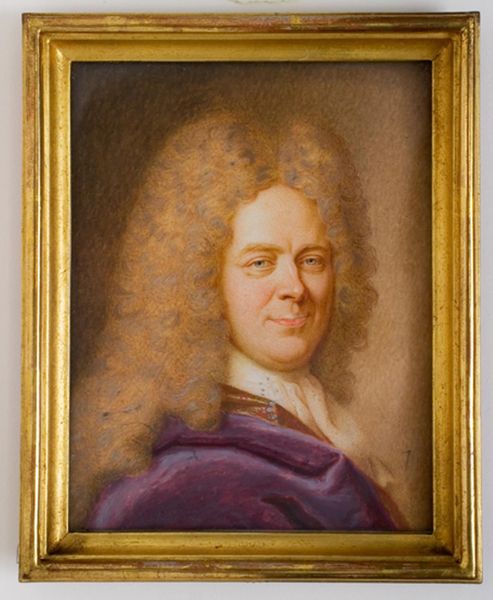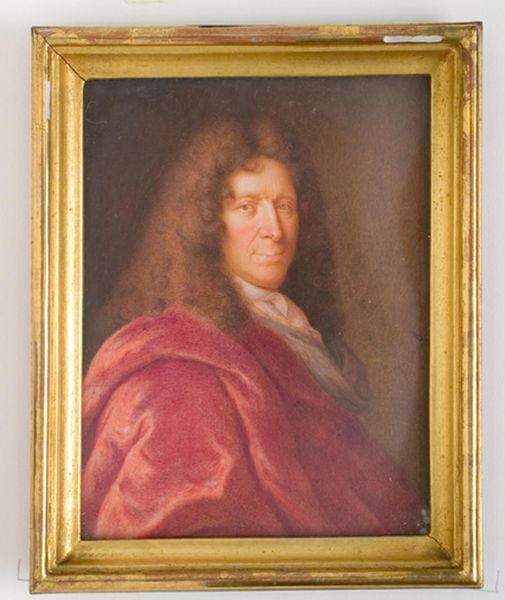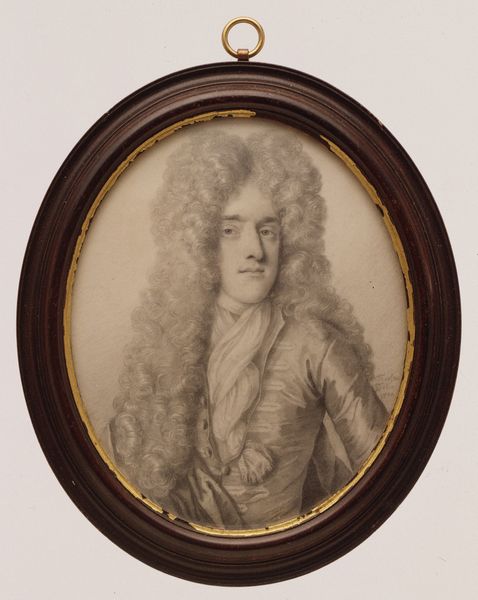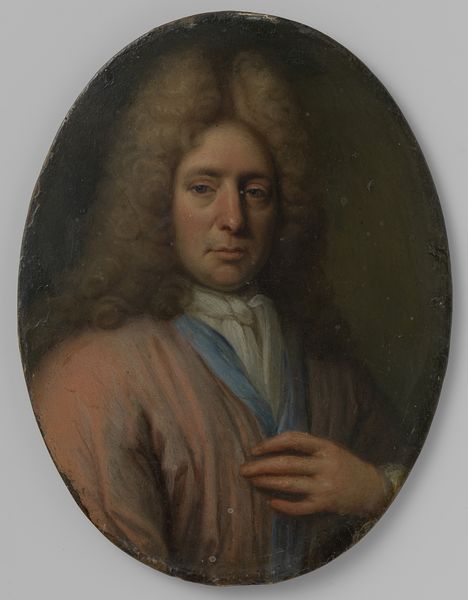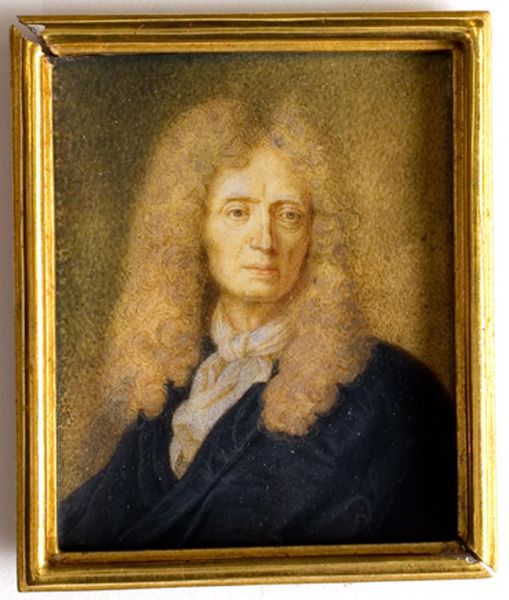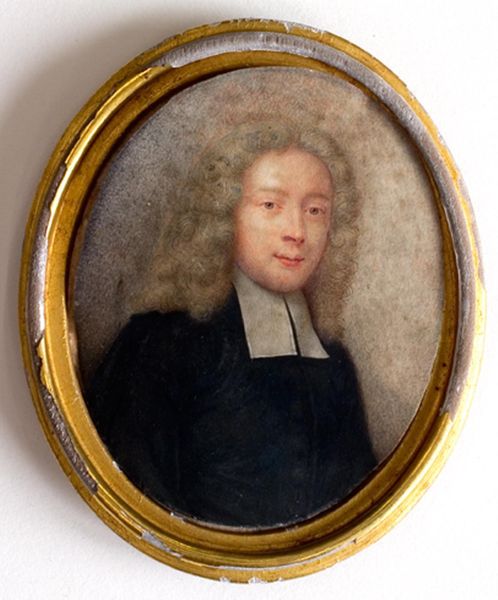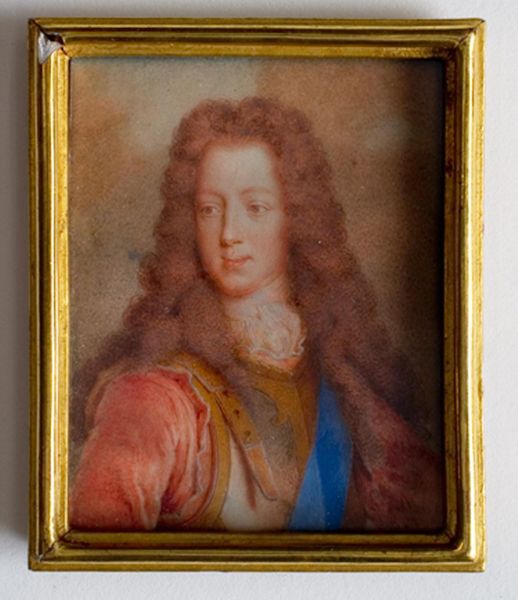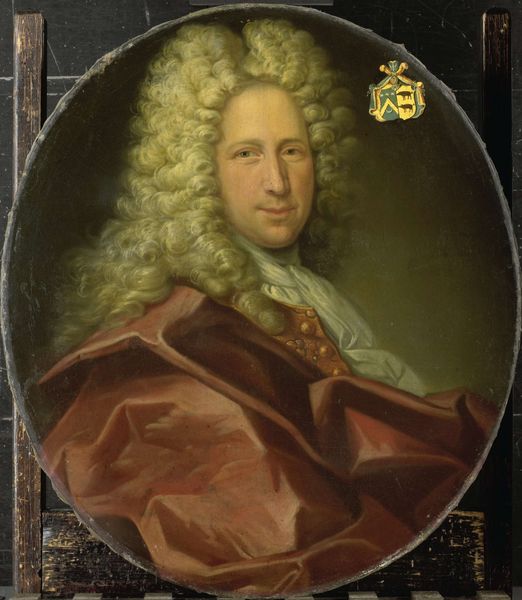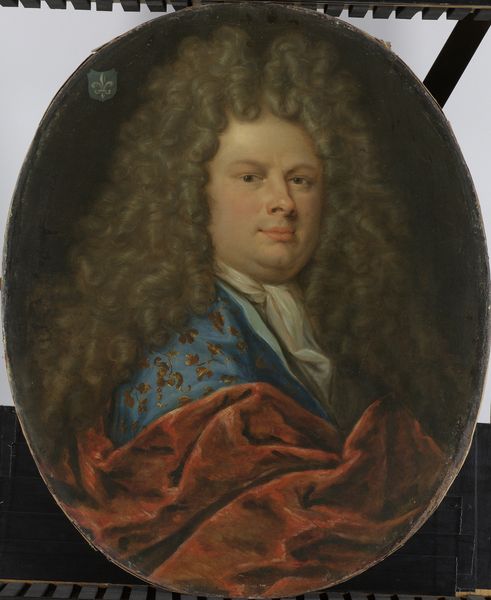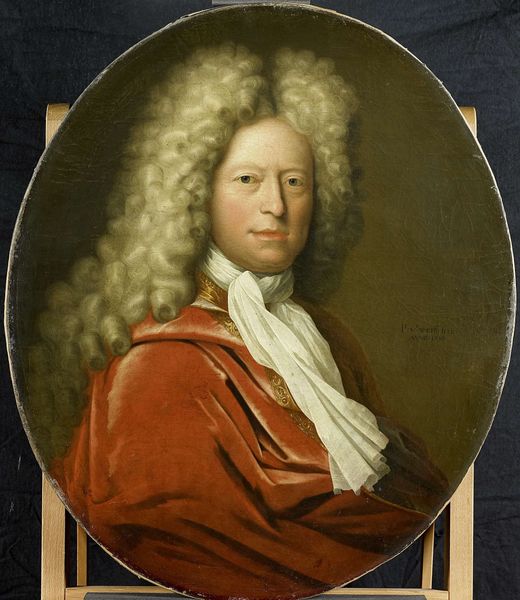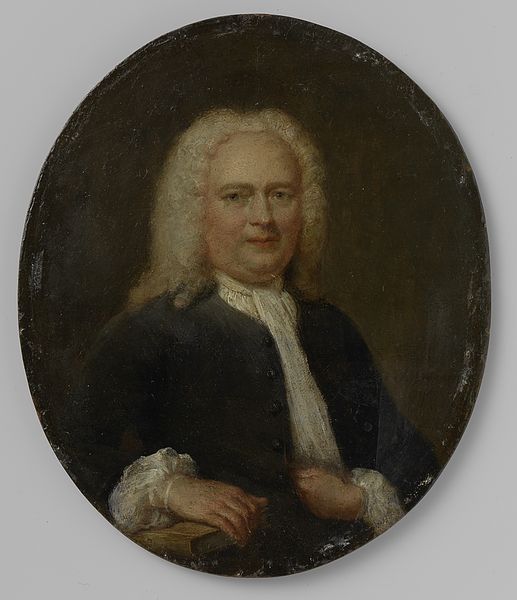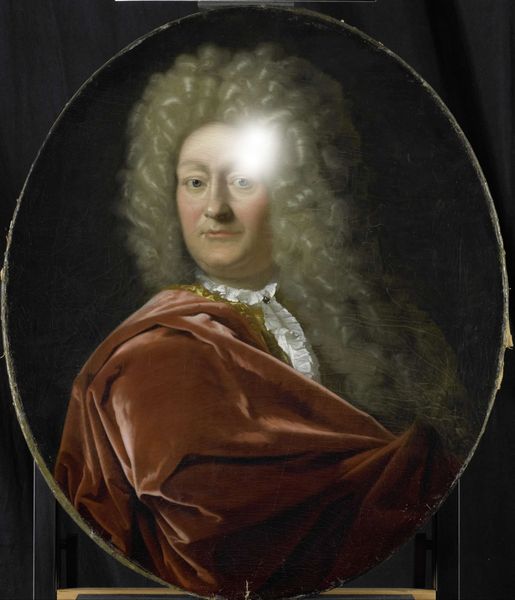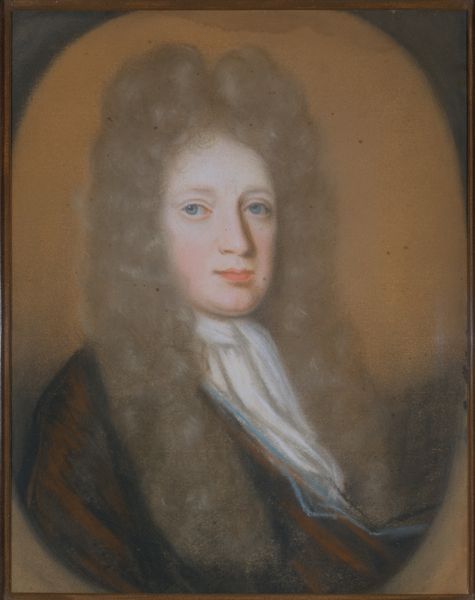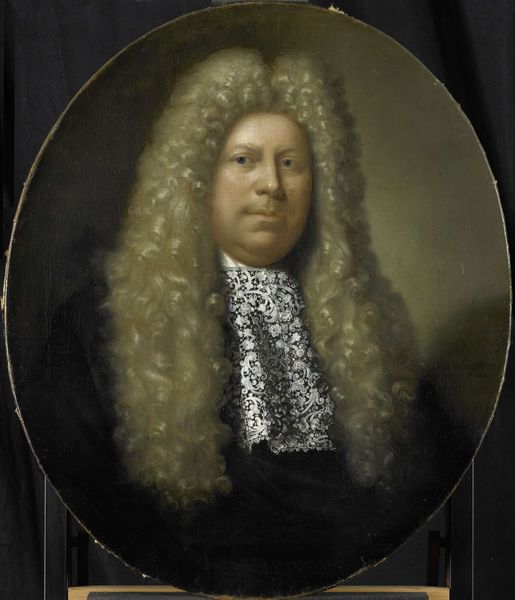
painting, oil-paint
#
portrait
#
baroque
#
painting
#
oil-paint
#
oil painting
#
history-painting
#
academic-art
#
portrait art
#
rococo
Dimensions: 6.8 cm (height) x 5.5 cm (width) (Netto)
Editor: Here we have “Herreportræt,” or "Portrait of a Man", an oil painting made sometime between 1726 and 1748, attributed to David Gardelle. It’s currently hanging at the SMK in Copenhagen. The sheer volume of the wig really strikes me! How do you interpret this work? Curator: The visual interplay between the subject and frame is striking. Notice the oval composition nested within the circular frame: a subtle repetition that contains and amplifies the figure's presence. How does this structural choice inform your understanding of the portrait? Editor: Well, it makes me focus more on the face. I hadn't thought of it that way. The wig almost fights with the frame for dominance, but the painter's composition keeps the man’s face in control of the artwork. Curator: Precisely. Consider the Rococo style; its playful ornamentation never overshadows the underlying structure. Here, Gardelle masterfully orchestrates form and colour to capture not just a likeness, but a carefully constructed image that exudes aristocratic identity. Editor: The colours are quite muted, almost faded. Does that palette relate to its identity as a portrait? Curator: The limited palette draws our attention to tonal variations in the wig and coat. Gardelle employs a formal rigour within the genre. The very notion of capturing essence through structured visual means is worth examining, don't you agree? Editor: I do. Thinking about composition helps to better understand even a seemingly simple portrait. It makes me want to seek other portraits from the period to understand Gardelle's use of line and colour, the relationships between forms and structure. Curator: Indeed, comparative visual analysis yields great insight.
Comments
No comments
Be the first to comment and join the conversation on the ultimate creative platform.
